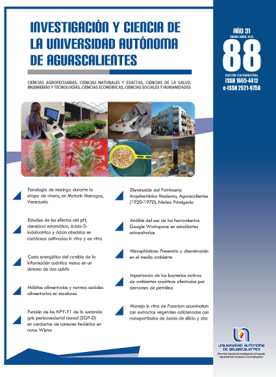Energetic cost of the change of mutual quantum information in a two qubits system
DOI:
https://doi.org/10.33064/iycuaa2023883740Keywords:
two-qubits, classical correlation, quantum discord, mutual quantum information, entropy, energy carrierAbstract
In order to avoid unwanted effects where the signal of the two qubits is lost (decoherence), it is considered a two qubits system exposed to a common reservoir at very low temperatures. It is derived as an expression for Mutual Quantum Information. Such a quantity has a classical component and also a quantum component. It is found to be a strictly quantum limit where classical correlations vanish. By invoking the First Law of Thermodynamics, it is shown that the concept of conservation behind the generation (loss) of Mutual Quantum Information will be proportional to the energy conservation of the system at constant temperature. In case of generation (loss) of Quantum Information the system will absorb (transfer) internal energy from (towards) the environment.
Downloads
References
• Horodecki M., Horodecki P. & Horodecki R. (2001). Mixed-State Entanglement and Quantum Communication. In Introduction to Basic Theoretical Concepts and Experiments (pp. 151-195), Berlin, Alemania: Springer-Verlag.
• Bailyn, M. (1994). A Survey of Thermodynamics, New York, USA: American Institute of Physics Press.
• Bennett, C.H. and Wiesner, S.J. (1992) Communication via One and Two Particle Operators on Einstein-Podolsky-Rosen States. Physical Review Letters 69(20), 2881-2889.
• Bennett, C. H., Brassard, G., Crepeau, C., Jozsa, R., Peres, A. and Wootters, W. K. (1993) Teleporting an unknown quantum state via dual classical and Einstein-Podolsky-Rosen channels. Physical Review Letters 70(13), 1895-1899.
• Ekert A. K. (1991) Quantum cryptography based on Bell's theorem. Physical Review Letters 67(6), 661-663.
• Horodecki R., Horodecki P., Horodecki M., Horodecki K. (2009) Quantum Entanglement, Reviews of Modern Physics 81(2), 865-942.
• Maniscalco S., Francica F., Zaffino R. L., LoGullo N. L. & Plastina F. (2008) Protecting Entanglement via the Quantum Zeno Effect, Physical Review Letters 100(9), 090503-090511.
• Maziero J., C’eleri L. C., Serra R. M., & Vedral V. (2009) Classical and quantum correlations under decoherence, Physical Review A 80(4), 044102-044109.
• Morcillo J. (1977), Temas Básicos de Química. Madrid, España: Alhambra
• Ollivier H. & Zurek W. H. (2001) Quantum Discord: A Measure of the Quantumness of Correlations, Physical Review Letters 88(1), 017901-017912.
• Sakurai J. J. & Napolitano J. (2017) Modern Quantum Mechanics, Cambridge University Press.
• Vedral V. (2003) Classical Correlations and Entanglement in Quantum Measurements, Physical Review Letters 90(5), 050401-050408.
• Yang X. & Xiao J.-H (2013) Dynamics of quantum discord for a two-qubit system, Optoelectronics Letters 9(1), 69-72.
• Yang X. & Zou H.-M (2010) Preparation and transfer of entanglement in atomic ensembles interacting with cavity fields, Optoelectronics Letters 6(2), 144-147.
• Zukowski M., Zeilinger A., Horne M. A., Ekert A. K. (1993) ‘‘Event-ready-detectors’’ Bell experiment via entanglement swapping, Physical Review Letters 71(26), 4287-4291
Published
How to Cite
License
Copyright (c) 2023 Manuel Ávila-Aoki, María de Lourdes López-García

This work is licensed under a Creative Commons Attribution-NonCommercial-ShareAlike 4.0 International License.
Las obras publicadas en versión electrónica de la revista están bajo la licencia Creative Commons Atribución-NoComercial-CompartirIgual 4.0 Internacional (CC BY-NC-SA 4.0)









